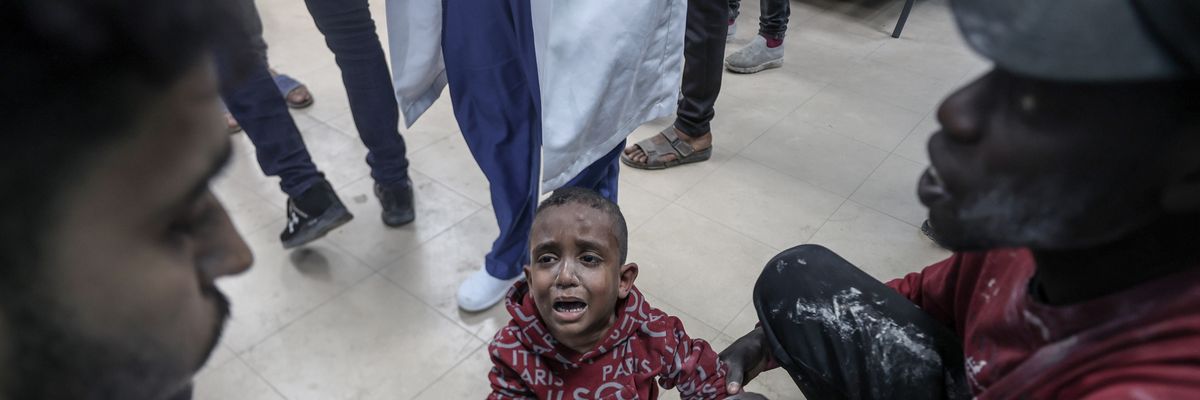In an effort to put "at the front of people's minds and on the desks of decision-makers" the human cost of the U.S.-backed Israeli onslaught in Gaza, scientists on Wednesday said an escalation in the bombardment was projected to kill 85,000 Palestinians in the next six months—which would bring the total death toll to more than 114,000 people, or about 5% of Gaza's population, in less than a year.
Researchers at Johns Hopkins University and the London School of Hygiene and Tropical Medicine completed modeling for a report titled Crisis in Gaza: Scenario-Based Health Impact Projections, estimating the projected "excess deaths"—those above what would be been expected before the war—based on the health data available in Gaza before Israel began its air and ground attacks in October and the data that's been collected in more than four months of fighting.
The potential deaths of 85,000 additional people in the next six months represents the worst of three possible scenarios modeled by the researchers.
If bombing, shelling, and other ground attacks continue at their current pace, the scientists projected the killings of 58,260 Palestinians over the next six months.
The study, which has not yet been peer-reviewed, considers deaths from traumatic injuries as well as infectious diseases, maternal and neonatal health crises, and diseases for which patients have lost access to treatment, such as kidney disease or cancer. With 1 in 4 households in Gaza now facing "catastrophic" levels of hunger, according to the Integrated Food Security and Nutrition Phase Classification, "nutritional status" was named as a risk factor in the study, but the researchers did not include starvation as a potential cause of excess deaths.
In the case of an outbreak of an infectious disease such as cholera—which public health experts have warned could happen due to Israel's near-total blockade on humanitarian aid and a lack of potable water—66,720 people could die if the current level of violence continues.
"Even in the best-case cease-fire scenario, thousands of excess deaths would continue to occur, mainly due to the time it would take to improve water, sanitation, and shelter conditions, reduce malnutrition, and restore functioning healthcare services in Gaza," the study reads.
If an immediate cease-fire were established, the researchers projected at least 6,500 additional deaths, as people would be expected to die of previous injuries or be killed by unexploded ordnance. The deaths of babies and women would also still be expected during and soon after childbirth, as complex care has become unavailable for many due to the collapse of the healthcare system, and undernourished children could die because of their reduced ability to fight off infections like pneumonia.
If a cease-fire began but an outbreak of a disease such as cholera, polio, or meningitis occurred, the scientists projected 11,580 people would die in Gaza between now and August.
Negotiations for a potential truce were underway on Thursday in Israel, where a U.S. envoy arrived as Israeli forces continued to bomb Rafah. About 1.5 million people are currently in the city in southern Gaza, with most having fled Israeli attacks on other cities.
"The decisions that are going to be taken over the next few days and weeks matter hugely in terms of the evolution of the death toll in Gaza," Francesco Checchi, professor of epidemiology and international health at LSHTM, toldThe New York Times Wednesday.
Despite the U.S. and Israeli governments' persistent claims that the Israel Defense Forces are seeking to eradicate Hamas in retaliation for an attack on southern Israel that it led in October, the United Nations has estimated that about 40% of the people killed in Gaza have been children. This trend would continue, according to the researchers, who projected that 42% of the Palestinians killed in the next six months would be under the age of 19.
Journalist Séamus Malekafzali called the scientists' projections "nothing short of horrific."
Checchi told the Times that the researchers wanted to put the projections "at the front of people's minds and on the desks of decision-makers, so that it can be said afterward that when these decisions were taken, there was some available evidence on how this would play out in terms of lives."

